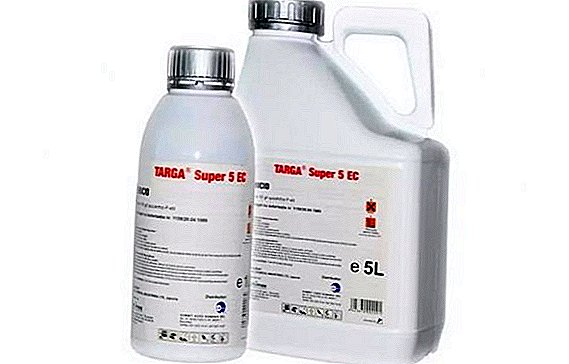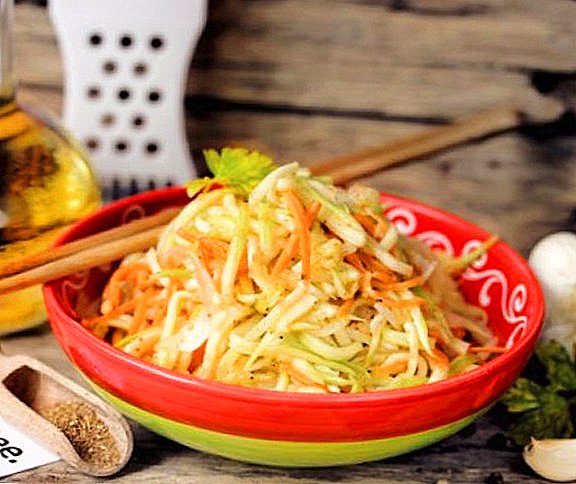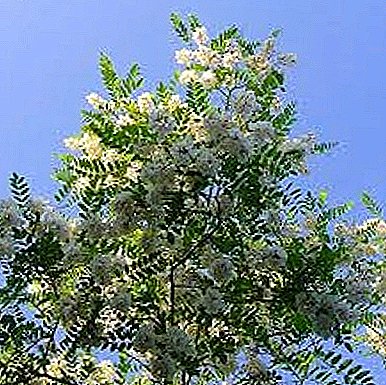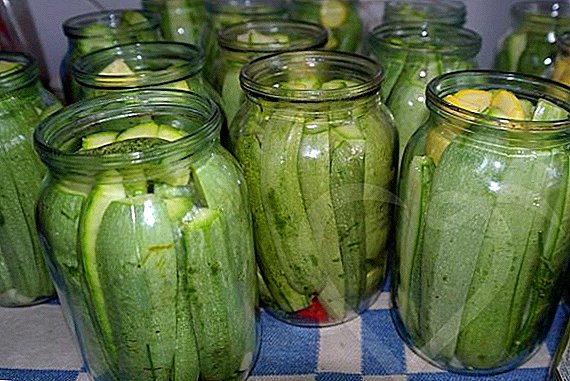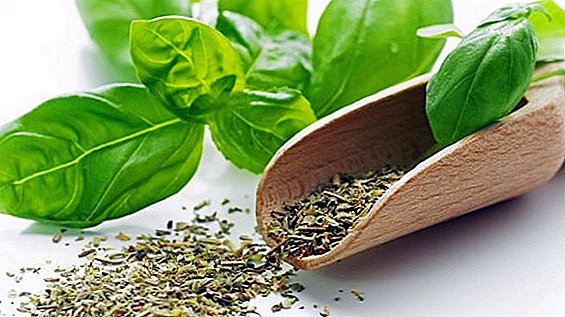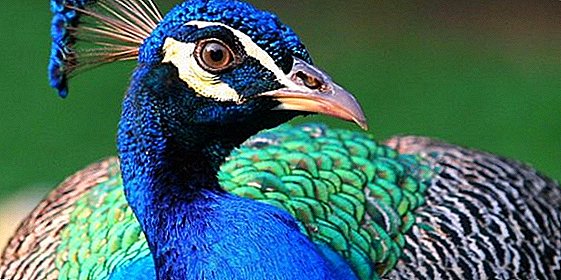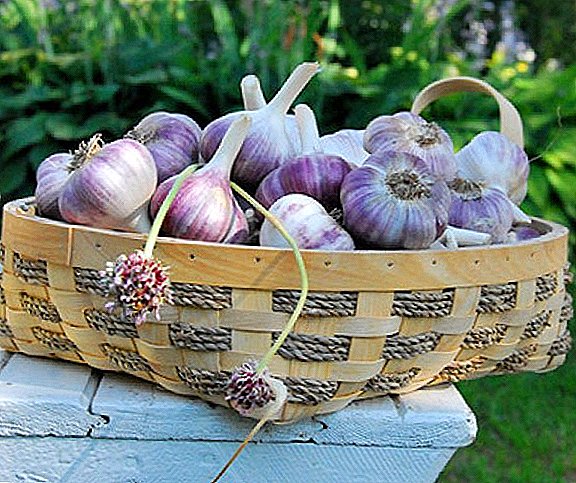 In the spring on the site, many summer residents with annoyance find yellowed leaves of garlic planting. And this is not only an unpleasant effect, but also a sign that the agricultural technology of growing winter garlic is broken. After all, following the yellowing of the leaves, the plant stops growing altogether, and the cloves rot. Why does winter garlic turn yellow in spring and what to do, we consider in this article.
In the spring on the site, many summer residents with annoyance find yellowed leaves of garlic planting. And this is not only an unpleasant effect, but also a sign that the agricultural technology of growing winter garlic is broken. After all, following the yellowing of the leaves, the plant stops growing altogether, and the cloves rot. Why does winter garlic turn yellow in spring and what to do, we consider in this article.
Low spring temperature
First of all, the leaves of winter garlic turn yellow in spring due to the low temperature. And this is the main reason.
The snow no longer covers the plant, and it becomes vulnerable - the roots weaken, and the energy for development is taken from the leaves.  Basically, a deep landing leads to the freezing of garlic. Therefore, to avoid the appearance of yellow leaves, plant this crop preferably at a depth of 5-7 cm And to prevent the appearance of yellowness in the spring, you can cover the young saplings with film.
Basically, a deep landing leads to the freezing of garlic. Therefore, to avoid the appearance of yellow leaves, plant this crop preferably at a depth of 5-7 cm And to prevent the appearance of yellowness in the spring, you can cover the young saplings with film.
It will be useful for you to read about the autumn, spring and winter planting of garlic.If the garlic plantings are slightly caught by frost (it was frost), they should be immediately treated with solutions "HB-101", "Zircon", "Epin" and other stimulants. They will not only improve rooting, but also make the plant more resistant to various diseases.
Did you know? It is possible to avoid frosting of winter garlic by proper planting in the autumn - 10-20 days before the onset of frost.
Low soil acidity for growing
In order for the garlic to be pleased with its harvest, it should be planted in neutral soil. If the land on your site is characterized by high acidity, it should be lowered. To do this, in the autumn digging in the soil add lime.  With increased acidity, the rate of lime per hundred parts - 50-70 kg, for acidic - 35-45 kg, for weak acid - 30-35 kg. After making lime plot should be carefully dig.
With increased acidity, the rate of lime per hundred parts - 50-70 kg, for acidic - 35-45 kg, for weak acid - 30-35 kg. After making lime plot should be carefully dig.
Nitrogen deficiency
Lack of certain nutrients, including nitrogen, is also the cause of yellowing of the foliage and the appearance of a reddish tint.  If you notice that the tips of the leaves turn yellow in winter garlic, the first thing to do is to urgently fertilize the soil with manure or urea (urea). In this case, urea is recommended to water the plant right through the leaves.
If you notice that the tips of the leaves turn yellow in winter garlic, the first thing to do is to urgently fertilize the soil with manure or urea (urea). In this case, urea is recommended to water the plant right through the leaves.
Important! Fertilizers applied in autumn are washed out of the soil during the winter.
Insufficient watering plants
Garlic plantings like moisture, so the soil should be loose and well hydrated - so it is enriched with oxygen.
Watering is particularly relevant at the beginning of the growing season.  It would be nice to use highly effective additives that help loosen the earth and structure it, increasing the degree of absorption of moisture and nutrients.
It would be nice to use highly effective additives that help loosen the earth and structure it, increasing the degree of absorption of moisture and nutrients.
Important! Excess moisture for garlic is more pernicious than its deficiency.
Lack of potassium
Potassium deficiency can also harm a young plant. In most cases, yellowing leaves for this reason, there is a cold spring.  The roots in this case do not receive enough nutrition from the soil and begin to take potassium from the leaves. Potassium deficiency can also be determined by the uneven growth of leaflets, they droop and become thin.
The roots in this case do not receive enough nutrition from the soil and begin to take potassium from the leaves. Potassium deficiency can also be determined by the uneven growth of leaflets, they droop and become thin.
As an organic fertilizer for garlic, you can use manure: rabbit, sheep, horse, pork, cow.At such a time, you need to know how to water the garlic if it turns yellow due to a lack of potassium. It can be any potash, mineral fertilizers or simple ash.
Did you know? Good fills the lack of potassium ash solution - a glass of wood ash and 2 tablespoons of salt in a bucket of water.
Diseases of winter garlic and yellowing of leaves
The most common diseases accompanied by yellowing of garlic leaves, are:
- White rot. The leaves of the plant first turn yellow and wither, the bulbs become covered with mold and rot. Plants are dying one after another, and on their surface a fluffy whitish plaque is seen. Most often the disease occurs in the spring, with a nitrogen deficiency.
- Basal rot. Although this type of fungus is present in almost all soils and does not cause any special problems if the plants do not survive stress. Manifested by yellowing of the leaves, which moves down. In principle, the symptoms do not differ from white rot, only the plant rots more slowly. It is necessary to combat this nuisance in advance by treating the planting material with a disinfecting solution (for example, "Thiram").
- Aspergillosis or black mold. Perhaps the most dangerous disease that often affects an immature plant. Symptoms - the bulbs become soft, the leaves turn yellow.
- Fusarium The source of this disease is excess moisture. The leaves begin to turn yellow from above already in the process of ripening. This disease is characterized by brown stripes on the stems. If winter garlic turns yellow due to Fusarium, the first thing a plant should be treated with is solution potassium permanganate.
- Penicillus or blue mold. It affects mainly the plant after harvesting as a result of careless handling. Garlic gradually turns yellow and dies.
- Rust. Loves high humidity. It appears yellowish spots and specks on the leaves. Over time, the foliage turns orange and brown. Fighting method - processing cloves before landing.
 Garlic often turns yellow from fungal diseases. Of course, Fusarium and Bacterial Rot are easier to prevent than to cure.
Garlic often turns yellow from fungal diseases. Of course, Fusarium and Bacterial Rot are easier to prevent than to cure.Therefore, before planting, the teeth of a plant should preferably be disinfected with a weak solution of potassium permanganate or with preparations “Maxim” and “Fitosporin”, filling the planting material with a solution for 15-30 minutes. Even if you did not do this before planting, you can pour on the beds with the solution.
For prophylaxis, it is also possible to disinfect the soil by treating it with a solution of copper sulfate (copper sulfate) or saline. At the first signs of damage to the plant, it is urgently necessary to process garlic plantings with fungicides or similar preparations.
Did you know? It has long been observed that mainly winter garlic turns yellow, while spring has a stronger immunity.
Major plant pests
Garlic landings may be attacked harmful insects:
- onion flies;
- onion tick;
- onion covert;
- stem nematode worms;
- onion moth;
- tobacco thrips;
- root tick.
 Various drugs will help to cope with such a nuisance; their composition will deter pests and stop their spread.
Various drugs will help to cope with such a nuisance; their composition will deter pests and stop their spread.From onion flies and other pests well helps dusting wet leaves with a mixture of wood (vegetable) ash and tobacco dust.
Important! The use of healthy, high-quality planting material and regular feeding will help garlic to strengthen immunity to various diseases.If the leaves of garlic turn yellow, the first step is to analyze and identify the cause of this problem. And in order to avoid such troubles in the future, experienced gardeners advise you to comply with agricultural practices and crop rotation rules.


